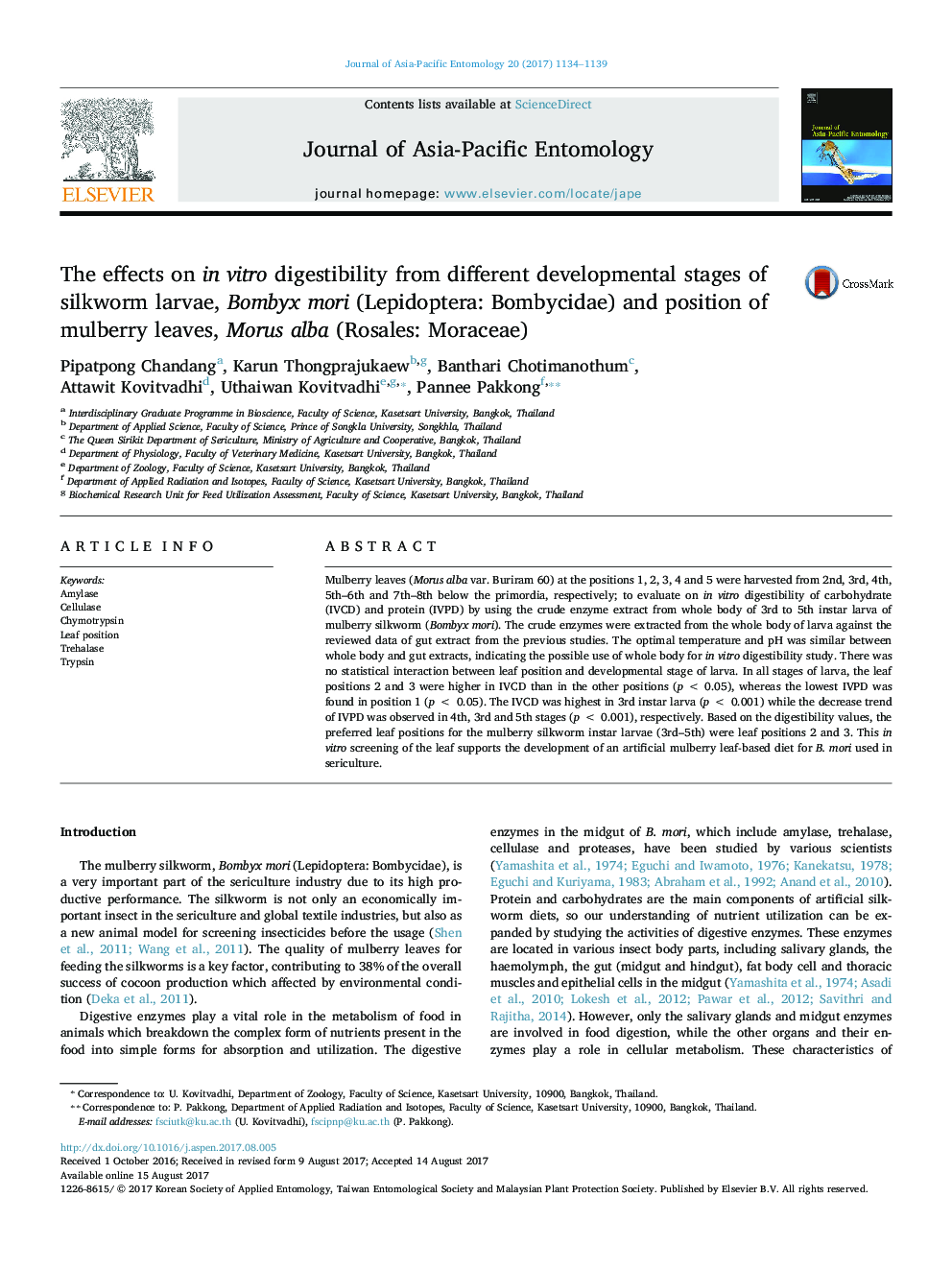| Article ID | Journal | Published Year | Pages | File Type |
|---|---|---|---|---|
| 5763461 | Journal of Asia-Pacific Entomology | 2017 | 6 Pages |
â¢Characteristics of whole body enzymes were similar to the enzymes from gut extracts.â¢Whole body is an alternative enzyme source for digestibility study in silkworm larva.â¢The leaf positions 2 and 3 were preferred by silkworm instar larvae.â¢In vitro screening supports artificial mulberry leaf-based diet for silkworm larva.
Mulberry leaves (Morus alba var. Buriram 60) at the positions 1, 2, 3, 4 and 5 were harvested from 2nd, 3rd, 4th, 5th-6th and 7th-8th below the primordia, respectively; to evaluate on in vitro digestibility of carbohydrate (IVCD) and protein (IVPD) by using the crude enzyme extract from whole body of 3rd to 5th instar larva of mulberry silkworm (Bombyx mori). The crude enzymes were extracted from the whole body of larva against the reviewed data of gut extract from the previous studies. The optimal temperature and pH was similar between whole body and gut extracts, indicating the possible use of whole body for in vitro digestibility study. There was no statistical interaction between leaf position and developmental stage of larva. In all stages of larva, the leaf positions 2 and 3 were higher in IVCD than in the other positions (p < 0.05), whereas the lowest IVPD was found in position 1 (p < 0.05). The IVCD was highest in 3rd instar larva (p < 0.001) while the decrease trend of IVPD was observed in 4th, 3rd and 5th stages (p < 0.001), respectively. Based on the digestibility values, the preferred leaf positions for the mulberry silkworm instar larvae (3rd-5th) were leaf positions 2 and 3. This in vitro screening of the leaf supports the development of an artificial mulberry leaf-based diet for B. mori used in sericulture.
Graphical abstractDownload high-res image (215KB)Download full-size image
